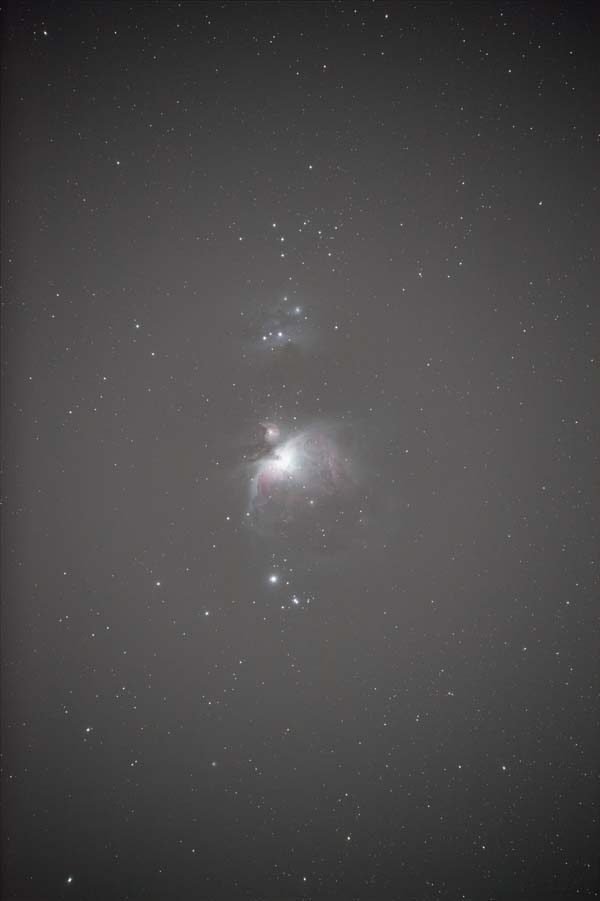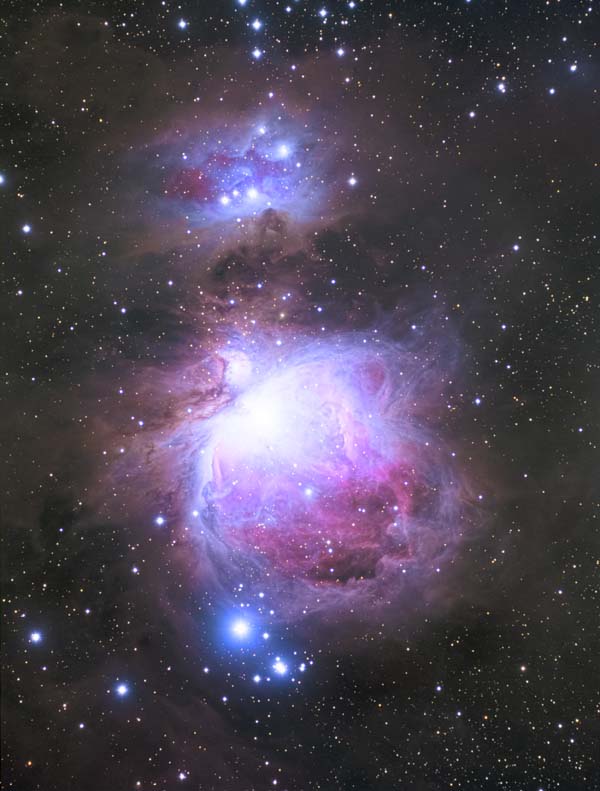Here is the detailed presentation about the prime-focus astrophoto performances of our 102mm f/7 triplet SD apochromat objective lens unit (optional item of BINOKIT - OBJ102SD-Triplet.)

JPY138,000/pc (JPY151,800/pc incl. 10% Consumption Tax)
Overview
This 102mm f/7 triplet SD apochromat objective lens unit (mentioning "new objective lens" hereafter) was originally developed mainly for visual use, but it can yield very high performance for prime-focus astrophoto use, too. Our contracted astrophotographer has tested this new objective lens practically, and he gave us a detailed report with several photos proving the excellent performance, as well as the tips for the useful combination with BORG components. Shown as below.
About a focal reducer
A focal reducer is essential for astrophotos with this new objective lens. This time BORG focal reducer 0.72xDGQ [7872] was used, as it's a current model and used by many BORG owners. As a result, it's the very best match with our new objective lens. And, as it becomes f/5 (f.l. 514mm), it's also quite recommendable as an upgrading option from BORG 90FL or 71FL
Full-frame image
The full-frame image with new objective lens + BORG 0.72xDGQ focal reducer. Click to enlarge (to actual pixels.) Check both central and edge star images.

Objective lens: BINOTECHNO's 102mm f/7 triplet SD apochromat objective lens unit
Focal reducer: BORG focal reducer 0.72xDGQ [7872]
Camera: Canon full-frame size digital camera
Explosure: 5min.
Image processing: only Dirk correction, Level correction, and Digital development (no Flat correction and no Sharp processing)
Astrophotographer's comment: It's quite possible to take excellent full-frame astrophotos with this combination. Highly recommended for present BORG users. Precisely examining the image, the stars at the left corner are a bit deformed, but it's caused with various factors and the extent of the deformation is very little that is never found up to A4-sized print. Also the edge darkness is a little prominent and the bright star images at the very edge are cracked just a bit. Still, the edge darkness itself can be compensated by flat frame processing, so it's not a serious problem at all.
Example image
Another spectacular image with the same combination (with a different camera.) Click to enlarge (to actual pixels.)

Objective lens: BINOTECHNO's 102mm f/7 triplet SD apochromat objective lens unit
Focal reducer: BORG focal reducer 0.72xDGQ [7872]
Camera: Four Thirds Cooled camera
Filter: SVBONY LRGB filter(No Light Pollution Reduction filter used)
Explosure: L=5min.x63, R=5min.x18, G=5min.x18, B=5min.x21 (Total 10hours)
Astrophotographer's comment: Very best match with BORG Focal Reducer 0.72xDGQ. This new objective lens is really wonderful as original BORG objective lenses.
Combination Examples with BORG Components
The combination of BORG components when the above photos taken is following (from the rear end of the objective lens):
M57 Rotary device DX [7352]
If not used, M57/60 Extension Tube SS [7601] or other equivalent extension tube is necessary instead.
BORG focal reducer 0.72xDGQ [7872]
Remove Spacer S (as it's only for 90FL.) Also attach Spacer L when Filter BOXn is not used.
M57 to M49.8ADSS [7923]
This is necessary to reduce the backfocus when 0.72xDGQ is used with the new objective lens.
Camera Mounting Ring (for each brand)
Camera Mounting Holder M [7000]is not necessary.

